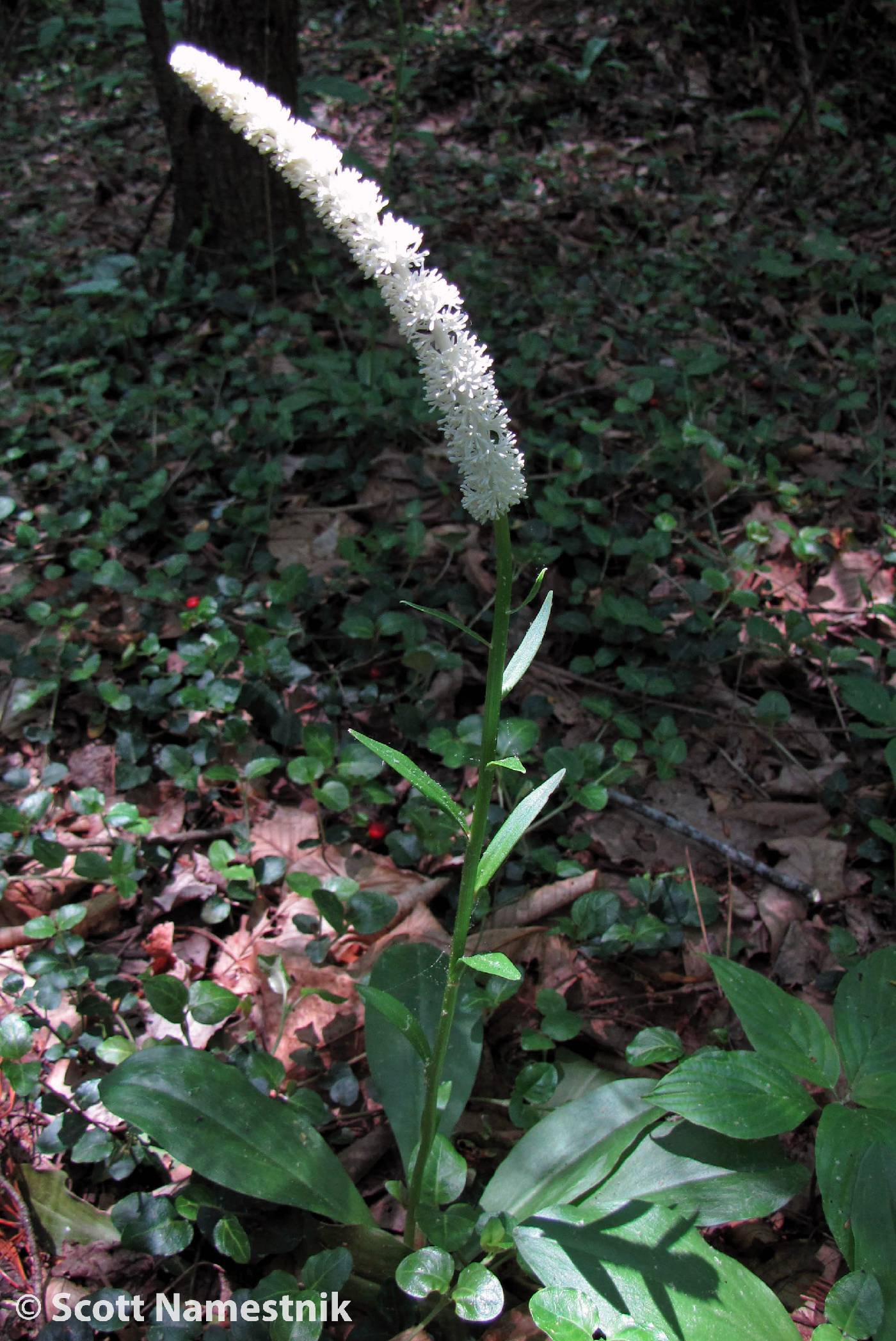
|
Family: Melanthiaceae |
Herbs, perennial, from stout, nodose rhizomes; roots contractile, fibrous, fleshy. Stems persistent in pistillate plants, erect to nodding, simple, hollow, glabrous. Leaves persistent, evergreen, crowded in basal rosettes, reduced distally; blades glabrous, margins entire to minutely undulate; basal blades petiolate, spatulate to oblanceolate; cauline blades sessile, linear to lanceolate. Inflorescences terminal, ebracteate; in staminate plants racemose, rarely spiciform, 7-15 cm, apex nodding; in pistillate plants racemose or spiciform, to 35 cm in fruit. Flowers unisexual, staminate and pistillate on different plants, occasionally bisexual, ebracteate, weakly syncarpous; tepals persistent, 6, spreading or ascending, distinct, white to greenish white, becoming yellow, 1-veined, narrowly linear-spatulate, nectaries absent; stamens 6; filaments distinct, flattened, unequal; anthers basifixed, 2-locular, oblong-oblanceolate, extrorse; ovary superior, 3-locular, deeply 3-lobed; septal glands absent; styles persistent, 3, recurved, distinct, linear-clavate; stigmas papillate along adaxial surface. Fruits capsular, erect, 3-locular, dehiscence loculicidal. Seeds 2-4 per locule, elliptic to linear-oblong, with broad, winglike aril. Chamaelirium and the east Asian Chionographis Maximowicz (H. Hara 1968) form a classic Arcto-Tertiary, disjunct generic pair whose distinctive nature among the melanthoid genera (J. D. Ambrose 1975, 1980) has lent support to their recognition as a separate tribe, Chionographideae Nakai, within the Melanthiaceae sensu stricto (M. N. Tamura 1998; W. B. Zomlefer 1997b), or as the separate family Chionographidaceae (A. L. Takhtajan 1994, 1997). Both genera have distinctive tetraporate pollen grains (M. Takahashi and S. Kawano 1989), both are based on x = 12 (H. Hara and S. Kurosawa 1962), and they share other karyological similarities (N. Y. Tanaka and N. Tanaka 1985). Floral sexuality is exceptionally diversified in the Chamaelirium-Chionographis lineage. Chamaelirium is dioecious or occasionally polygamodioecious, while Chionographis is often monoclinous or andromonoecious, sometimes gynodioecious, and rarely androdioecious (M. Maki 1992, 1992b, 1993; M. Maki and M. Masusa 1993, 1994). Chamaelirium luteum has been the subject of numerous studies on dioecism associated with dimorphism. Staminate and pistillate plants differ markedly in morphology, life history, and spatial distribution. Mature pistillate plants are more robust than staminate plants, and there are proportionally more staminate than pistillate plants in a given population (T. R. Meagher 1978, 1980, 1981, 1982, 1984; T. R. Meagher and J. Antonovics 1982, 1982b; T. R. Meagher and E. Thompson 1987).
Dioecious; tep 6, narrowly linear-spatulate, 1-nerved; stamens 6, the slender, flattened filaments about equaling the perianth, the short white anthers extrorse; ovary ellipsoid, with many ovules, capped by 3 distinct, slender, style-like stigmas; capsule loculicidal; seeds several in each locule, the fusiform body set obliquely within the white, coarsely cellular wing; perennial from a short, stout, praemorse rhizome, with numerous basal lvs, an erect stem with several smaller lvs, and a terminal raceme. Monotypic. Gleason, Henry A. & Cronquist, Arthur J. 1991. Manual of vascular plants of northeastern United States and adjacent Canada. lxxv + 910 pp. ©The New York Botanical Garden. All rights reserved. Used by permission. |
This project was made possible in part by the Institute of Museum and Library Services [MG-70-19-0057-19].
Powered by Symbiota



